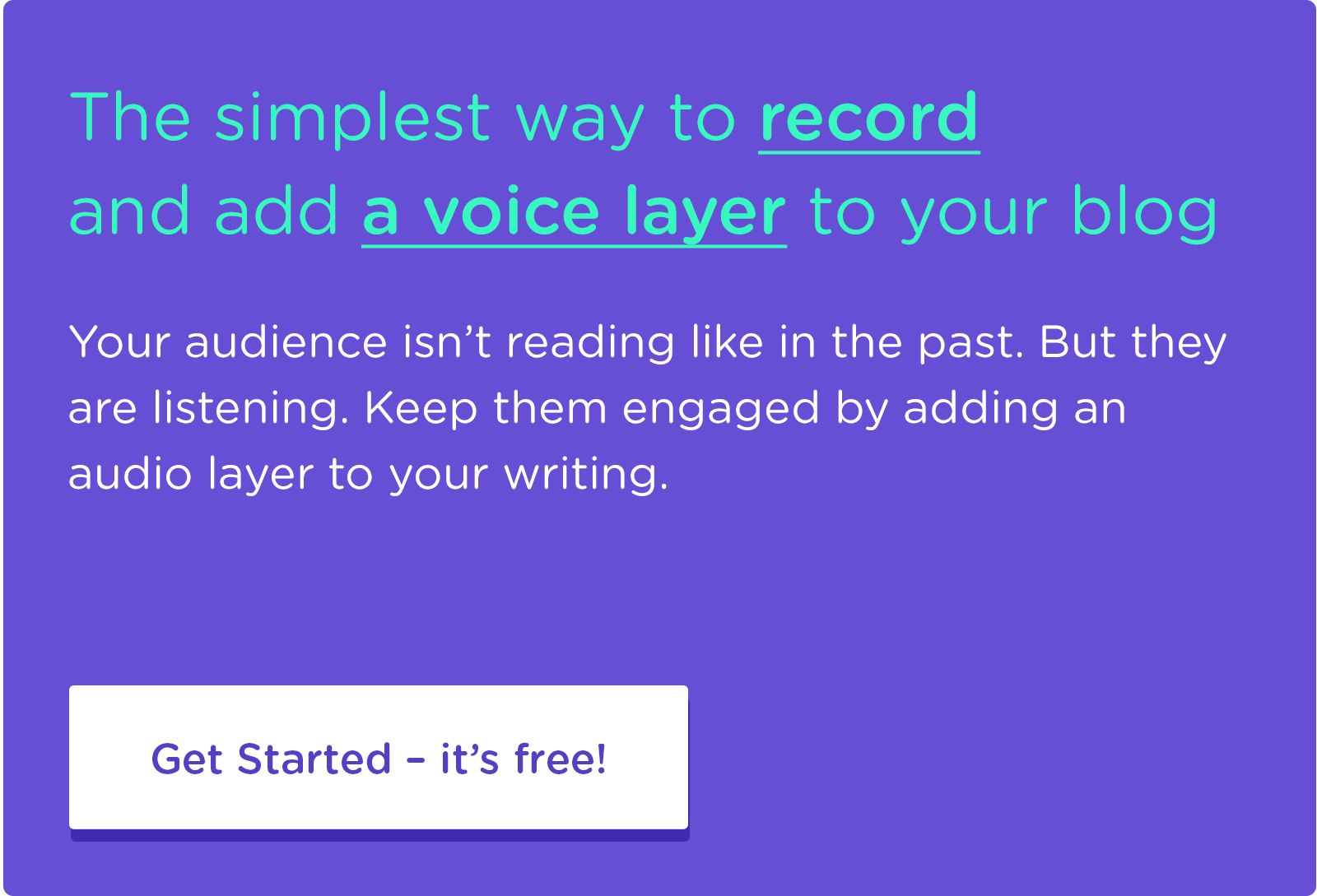How to Convince Your Boss You Need Audio Content
A sound argument & talking points to get your boss to buy in.

You’re ready to record, you’ve got the right content lined up and now all you need is some buy in from the big boss.
If the person you report to is hesitant about investing time in audio content, here’s a quick path to getting them on board.
When your boss asks you why you’re pitching audio, here’s how you can answer with confidence:
1. SEO Benefits
Let’s start with the easiest argument for audio content. You’re probably currently investing in SEO as a core marketing tactic and you’ve already done the hard work of getting executive buy-in on this essential practice.
If your boss has heard you rant on terms like content marketing or inbound marketing, you can explain expanding into audio like shovelling a little more coal on the fire – or adding more lighter fluid to the fire – or really, whatever fire metaphor you think they’ll like the most.
We’ve seen different content formats help amplify your hard work and gain more organic visibility over the years.
While infographics and video have risen to the forefront, Google has expanded their view on what content should rank, and, back in 2019, Google announced they would start showing audio content in search engine results (SERPs for short).
Ipso facto, adding audio can help your content gain more organic visibility – improving the reach of your SEO efforts.
A possible counter-argument from your boss:
Audio? Sounds time consuming.
Actually, you can save a TON of time and effort (and get more SEO bang-for-buck) by adding narrated audio versions of your top-performing blog content to your site. Using a tool like Allears, you can easily record directly within the browser and add that recording to the same page as your written content – pretty much regardless of what publishing platform you’re working with (ie: WordPress, Squarespace, Medium, etc).
2. Audience Engagement
Okay, say your boss acknowledges there might be some SEO benefits included, but they’re still not ready to board the audio train...
The next tactic you can try is zooming out a bit. Rather than throwing technical marketing terms at your respective skeptical, arms-folded exec, you can talk generally about your audience and paint a picture they can relate to.
As an icebreaking primer, ask them how many browser tabs they have open right now of articles they’re planning to read.
Or, ask them how many times they’ve sat down to read a blog post and didn’t finish it.
That’s because carving out time to read something is tricky in a fast-paced world full of distractions. It takes a lot of dedicated, mental energy to focus – plus, a rare happening in the boss-universe where distractions don’t pop up, in the form of an email or a full-on fire to put out.
Now, ask your boss to place themselves in the many-sized shoes of your audience.
Instead of being forced to sit down and read, imagine the increased opportunities for your respective audience members to engage with your content when it’s available in audio form.
Throw as many examples in as you like: while in the car, while doing the dishes, while folding laundry, while cleaning the house, while mopping the floor, while going on a run, while taking a Zoom breather, while in the shower, while stitching a pair of ripped jeans, etc. etc.
More audience engagement means more audience retention, which means more SEO juice, which means more organic visibility, which means more audience engagement. You get the picture. You’ve created your own flywheel, just by adding an audio recording of content you’ve already written.
A possible counter-argument from your boss:
I’m not convinced people want to listen to content rather than read it.
You can casually mention that smart speakers are now owned by one in four adults and voice assistants are used by 56% of adults (18 or older) in the US.
Oh, and last year, companies like Amazon and Spotify spent over $1 billion in the audio space with their marketing and advertising budgets.
3. Be Forward-Thinking or Get Left Behind
When all else fails, appeal to the entrepreneurial spirit of your boss. There are countless examples of companies who rested on their laurels, refused to adapt when new doors opened up, and got left in the past.
Notable mentions include Blockbuster ignoring streaming and Kodak refusing to embrace cameras going digital.
Remember Blackberry phones? Exactly. Adam Grant just wrote a whole book on it.
A possible counter-argument from your boss:
Now just isn’t the right time to try a brand new marketing tactic. We need to focus on getting more leads.
The reality is that being afraid of trying new marketing tactics is a guaranteed ticket to limiting your marketing success. Audience growth requires an obsession with testing, and that testing can’t just rely on past tactics.
If all else fails, just jump in and make a recording on your own – and rely on the tried and true principle of asking forgiveness, not permission – then show the results afterwards as a testament to your boldness.
Adding audio doesn’t have to be time-consuming, and, with the right arguments in hand, it doesn’t have to be a major sticking point for your boss.


